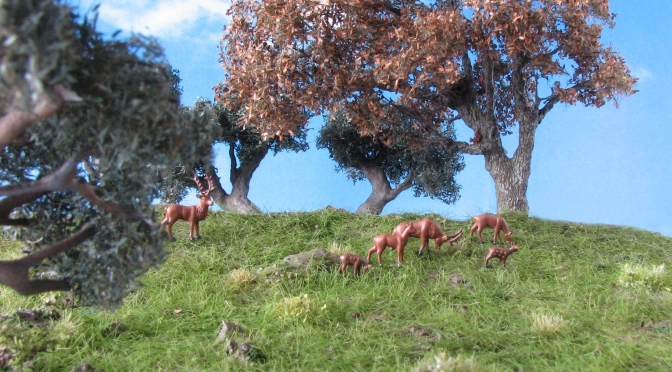The Battle of Great Plains or Campi Magni in 203 BCE was a disaster for Carthage, ultimately resulting in Hannibal being recalled from Italy to safe the day and finding his master in Scipio Africanus at Zama a year later (cf. Goldsworthy, 2003, 294-298).
At the first charge of the Roman cavalry both Carthaginian cavalry and infantry at the wings were driven from their ground, leaving exposed the centre formed by Celtiberian mercenaries. But it was here, faced with their imminent demise, that they made a name for themselves and allowed the Carthaginian and Numidian commanders Hasdrubal and Syphax to escape:
The Celtiberian line, though stripped of the support of both the wings, stood their ground; for neither did any hope of safety by flight present itself, as they were ignorant of the country, nor could they expect pardon from Scipio, against whom, though he had deserved well both of them and their nation, they had come into Africa to fight for hire. [9] Surrounded, therefore, on all sides by the enemy, they died with obstinate resolution, falling one upon another; and, while the attention of all was turned upon them, Syphax and Hasdrubal gained a considerable space of time to effect their escape (Liv. 30.8-9).
This was not a singular event, quite the opposite: Diodorus Siculus explains that “the Celtiberians advanced far in fame and were subdued by the Romans with difficulty and only after they had faced them in battle over a long period” (Diod. 5.33.1). And indeed they were one of the last to be overcome by the Romans after 200 years of upheavals and conflict on the Iberian peninsular (for campaigns in the 2nd century BCE see Quesada, 2006b).
But who were the Celtiberians? How did their panoply look like and how did they fight? I shall give an overview of the historical background of these fierce warriors, tactical considerations when using them in Field of Glory and finally some thoughts about sculpting and painting of my – now sadly OOP – Corvus Belli Celtiberians.
Continue reading Celtiberians – “They died with obstinate resolution” →










